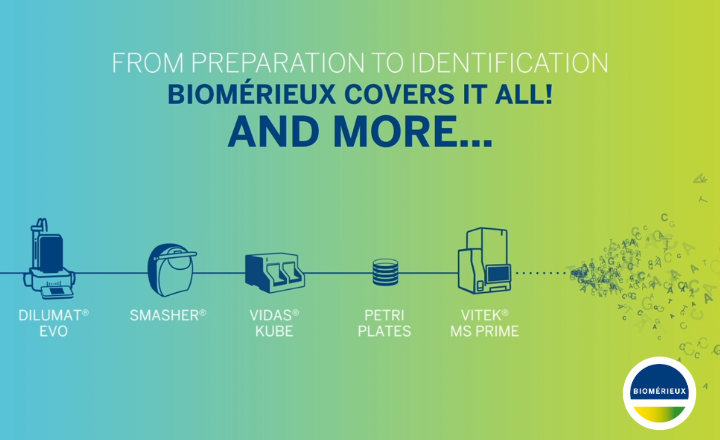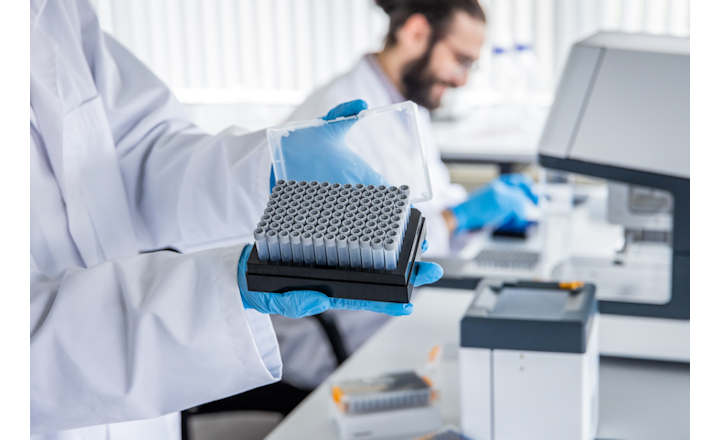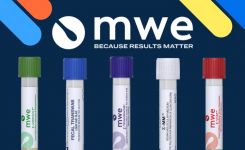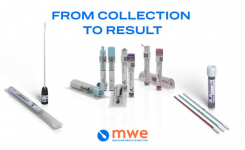The use of wire inoculating loops and needles for picking and transferring bacterial or fungal colonies goes back to the earliest days of bacteriology. However, we have the dairy world to thank for the use of wire loops as measuring devices because it was at the World's Dairy Congress in 1928 that Burri 1 described the use of calibrated loops for the quantitation of bacteria in a liquid suspension. And in some manuals of brewing microbiology, wire loops are still referred to as "Burri loops".
The use of inoculating loops as a diagnostic tool really began in the early 1960's. In 1955, Kass2 had proposed the use of bacterial counts as an indicator of urinary tract infections. Bacterial counts were established by a fairly time consuming pour-plate method, with each specimen requiring to be diluted in sterile water, and an aliquot of the diluted urine being mixed with molten agar which was then allowed to set in an empty Petri dish, and incubated prior to counting. Although the method marked a real advance in quantitative microbiology, it was cumbersome and by 1960 was still not in routine use. In 1961 the Lancet3 called for the development of a simpler yet reasonably accurate screening procedure.
In 1960 O'Sullivan4 published a study carried out in Birmingham comparing the colony counts obtained with the pour-plate method with those obtained by culture of a "standard loopful" of urine. For the inoculating loop method, a platinum wire loop , with 3 mm internal diameter, was used to sample the urine specimen, and the loopful spread over a nutrient agar plate. A good correlation was shown between the numbers obtained with the pour plate technique, and those for the loop technique. O'Sullivan's study used 100 samples. In 1963 McGeachie and Kennedy5 successfully modified the technique to the now familiar streaking in successive planes, and used their method in a study in Glasgow involving 1000 urine specimens. Again good correlation was obtained, and they proposed the introduction of quantitative bacterial counts in cases of suspected urinary infection.
Such methods are now routine, and over the years have been refined to take account of the materials available, and the variants of personal technique. Platinum remains the reference standard because of its durability, rapid cooling, and non-oxidation. However, it is expensive, and over the years nichrome has replaced it for routine use. Plastic disposable loops began to appear in the 1970's to address the needs of labs without access to gas for Bunsen burners, and also the valid concerns about aerosols of pathogenic bacteria being created by splattering when a used loop is flamed to sterilise it6. In 1983, Albers and Fletcher7 demonstrated that vertical sampling with a 1 µl "calibrated" platinum inoculating loop from small diameter containers (=<7mm) delivered only 50% of 1 µl, while sampling at a 45O angle from a larger container delivered 150% of the required 1 µl, potentially a three-fold difference in the delivery amount.
Currently the recommended method of use is to dip the end of the loop to just below the surface of the urine and remove vertically, taking care not to carry over any urine on the shank8.
Medical Wire has been manufacturing its comprehensive range of inoculating loops called Microloops® for around 40 years. The standard loops are made from twisted Nichrome 5 wire. Nichrome 5 is fast cooling and exceptionally durable, and the twisted shank does not vibrate as much as single wires.
Straight wire needles are also available. The standard nichrome wire loops are available in 6 sizes from 1 µl to 10 µl, while calibrated versions are supplied as 1 µl or 10 µl. Standard brass holders are available in 150mm, 175mm, and 205mm sizes.
Microloops® are also available in platinum. Unlike loops made in the laboratory, these calibrated platinum wire inoculating loops have a true closed loop, which assists with the accuracy of sampling.
Microloops® are calibrated by physical measurement of the internal diameter, and by the Evan's dye method. It is important to be able to check that calibrated inoculating loops are still within their specification after use, and Microloops® calibration gauges are available for 1 µl and 10 µl sizes.
Microstreakers® are convenient ready inoculating loops already fitted to a lightweight aluminium holder. These are available in a number of convenient sizes, including needle version, and or as calibrated 1 µl or 10 µl sizes.
In recent years our colour coded disposable sterile plastic inoculating loops, Microloops® D have become very popular with users. These are available as 10 µl (red), 5 µl (purple), and 1 µl (blue), or as a needle (green).
Because Microloops® are used in the analysis of patients specimens, they are In Vitro Medical Devices9, and CE-marked.
Full details of Microloops® can be found at Medical Wire's website, link is at the top of this page. References
1. Burri, P. 1928. The quantitative smear-culture: a simple means for the bacteriological examination of milk. Report of Proceedings World's Dairy Congress, p. 690-697
2. Kass, E. H., 1955, Amer. J. Med., 18, 764
3. Annotation. 1961. Lancet, 2, 1077 4. O. Sullivan, D. J., et al, 1960, A simplified method for the quantitative bacterial culture of urine. J. Clin. Path., 13, 527-8 5. McGeachie, J., & A. C. Kennedy. 1963, Simplified quantitative methods for bacteriuria and pyuria, J. Clin. Path, 16, 32-38 6. Collins, C. H., 1976, The bacteriologist's loop: a biohazard, The Gazette, 20, 55-6 7. Albers, A. C., & R. D. Fletcher, 1983, Accuracy of calibrated -loop transfer, J. Clin. Microbiol. 18, 40-42 8. BSOP 54 National Standard Method Inoculation of Culture Media, issued by Standards Unit, Evaluations and Standards Laboratory, Specialist and Reference Microbiology Division, Issue No. 4, Issue Date 03.05.05 www.evaluations-standards.org.uk 9. In Vitro Diagnostic Medical Devices Directive (98/79/EC), 1998, Official Journal of European Communities, L331/1
























